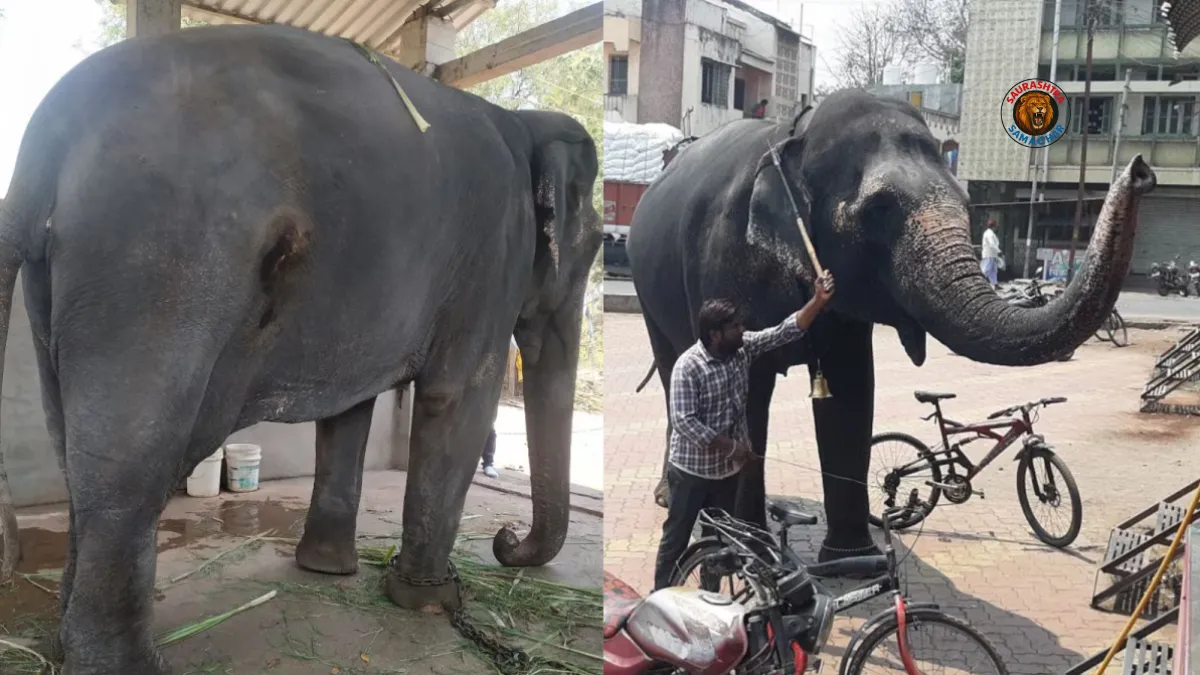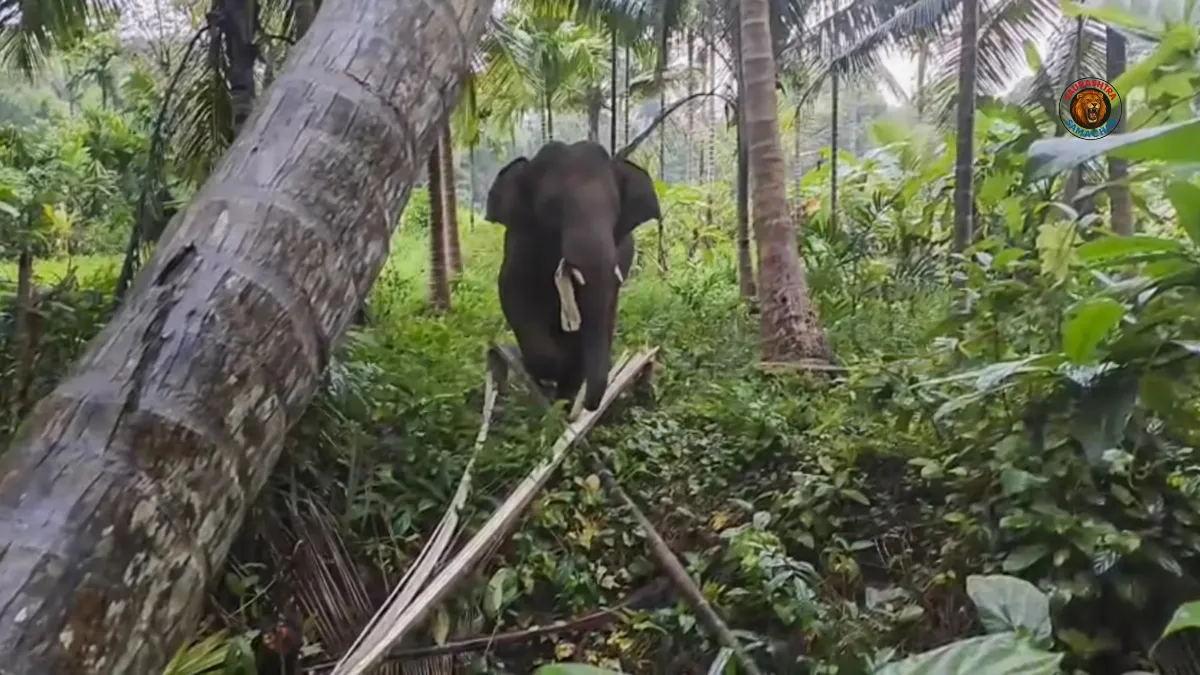Mahadevi elephant news has been making headlines across India as the saga of this beloved elephant’s relocation from Kolhapur to the Vantara rescue and rehabilitation center in Gujarat continues to spark public debate. With thousands of people rallying, legal battles in court, and emotional appeals from animal rights activists, the story of Mahadevi has become more than just a local issue—it’s a national conversation about wildlife welfare, legal protocols, and cultural sentiments.
Background of the Mahadevi Elephant Case
Mahadevi, a 25-year-old female elephant, was kept in a Jain monastery in Kolhapur, Maharashtra, for several years. Reports suggest that the elephant had been subjected to frequent transports between Maharashtra and Telangana, often without adhering to proper wildlife transportation regulations. Concerns about Mahadevi’s health conditions, including foot rot, digestive issues, and signs of psychological distress due to solitary confinement, were raised by various wildlife NGOs.
In January 2023, the Telangana Forest Department registered a Wildlife Offense Report against the mahout, B. Ismail, under Sections 48A and 54 of the Wildlife (Protection) Act, 1972. This legal action was a turning point, as it prompted authorities to investigate the elephant’s condition and the legality of her movements.
Court-Ordered Transfer to Vantara
The Bombay High Court, after reviewing health reports and legal documentation, passed an order on July 16, 2025, allowing Mahadevi’s relocation to Vantara, a state-of-the-art wildlife care facility in Jamnagar, Gujarat. The court emphasized the need to prioritize the elephant’s health and well-being, noting that her continued confinement in inadequate conditions was detrimental.
Vantara, an initiative by Reliance Industries, is known for its specialized veterinary care, open spaces, and enriched enclosures designed to rehabilitate rescued animals. Despite the court’s directive, the move triggered widespread protests in Kolhapur, with many locals feeling emotionally attached to Mahadevi, viewing her as a symbol of their cultural and religious heritage.
Public Outcry and Silent Rally in Kolhapur
On August 3, 2025, Kolhapur witnessed a massive silent rally where thousands of locals marched in solidarity, demanding Mahadevi’s return. Protesters expressed concerns over the emotional bond the community shares with the elephant, arguing that her removal was done without considering local sentiments. However, wildlife experts countered that Mahadevi’s deteriorating health necessitated professional rehabilitation, which could only be provided at Vantara.
The NGO overseeing the elephant’s relocation clarified that the move was carried out under strict court supervision, ensuring all legal protocols were followed. They further stressed that Mahadevi’s transfer aimed at offering her a better life, free from exploitation and medical neglect.
Key Facts about the Mahadevi Elephant Relocation
Here’s a quick summary of the important details surrounding the Mahadevi elephant news:
| Key Aspect | Details |
|---|---|
| Elephant Name | Mahadevi |
| Age | 25 years |
| Original Location | Jain Monastery, Kolhapur, Maharashtra |
| Health Issues | Foot rot, digestive problems, solitary confinement stress |
| Legal Case Filed | Wildlife Offense POR No. 12-07/2022-23 (Sections 48A & 54 of Wildlife Act) |
| Relocation Ordered By | Bombay High Court |
| New Location | Vantara Wildlife Rehabilitation Centre, Jamnagar, Gujarat |
| Date of Relocation Approval | July 16, 2025 |
| Public Protest Date | August 3, 2025 |
| NGO Involved | Vantara (Reliance Foundation initiative) |
Why Mahadevi Elephant News Has Touched a Nerve
The Mahadevi elephant news is more than just an isolated incident of animal relocation. It symbolizes the complex intersection of wildlife conservation laws, religious sentiments, and ethical responsibilities. While conservationists insist on providing Mahadevi with expert medical care and a species-appropriate environment, local communities feel a deep cultural loss.
This case has highlighted the urgent need for sensitizing the public about wildlife welfare policies while ensuring transparency in legal procedures. Experts argue that elephants, being wild animals, require specific habitats and care, which religious institutions are not equipped to provide. On the other hand, the emotional narratives attached to such animals cannot be ignored and must be addressed with empathy.
Also read: Exploring Nandani village Kolhapur: History, Temples, and the Madhuri Elephant Movement
What’s Next for Mahadevi?
As of now, Mahadevi is under veterinary supervision at Vantara, where a team of specialists is assessing her physical and psychological condition. Initial reports suggest that she has started responding positively to the enriched environment, with visible signs of reduced stress.
Legal experts believe that further petitions might be filed challenging the court’s relocation order, but the current focus remains on Mahadevi’s recovery. Activists urge for a balanced dialogue where both animal welfare and community sentiments are respected.
Also read: Mahadevi elephant news: Kolhapur’s Silent Protest Against Vantara Relocation
Conclusion
The Mahadevi elephant news serves as a critical reminder of the ethical dilemmas that arise when tradition and conservation intersect. While legal frameworks are designed to protect wildlife, their implementation must also factor in community engagement and transparent communication. Mahadevi’s journey from Kolhapur to Vantara may set a precedent for how such sensitive cases are handled in the future, ensuring that both animal welfare and public sentiment find a place in decision-making.


















































